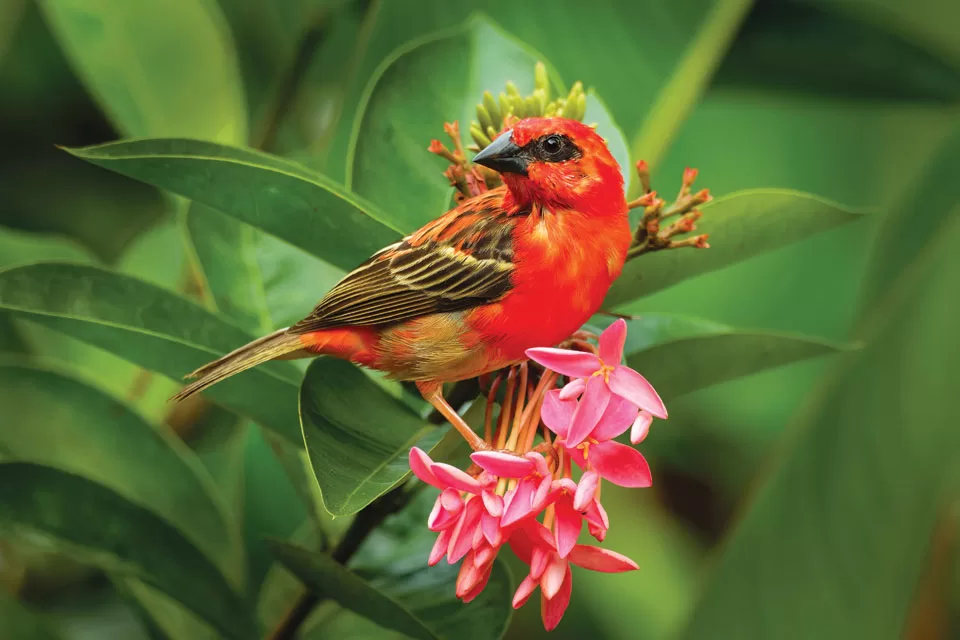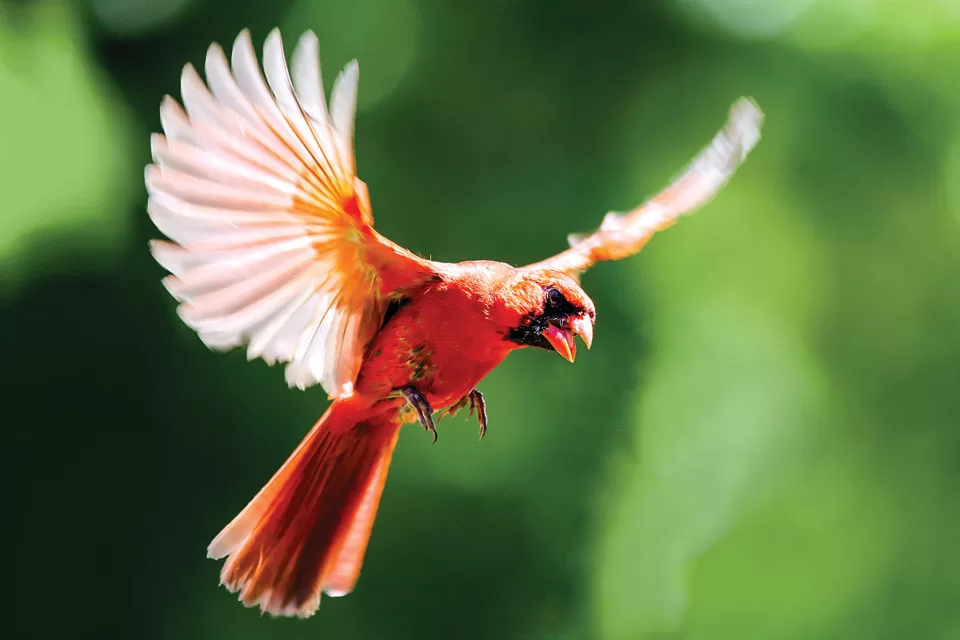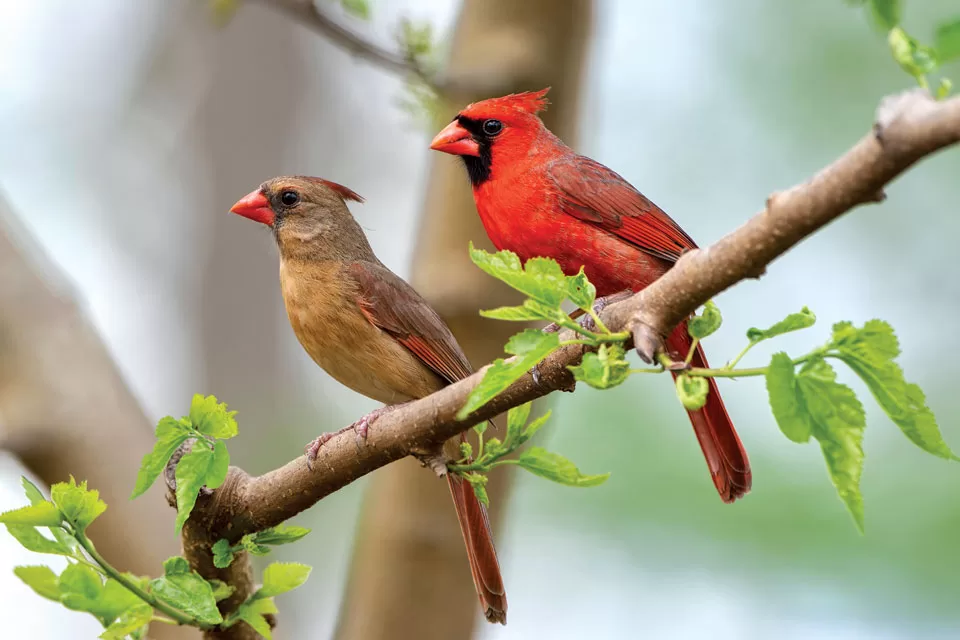
At Easter I saw a beautiful red cardinal in our backyard. I thought it was a quick visit, but the same cardinal came by every day for over a month and stayed longer and longer. I thought that was so unusual and it was a special time looking out and finding him. He even came to sit on our chairs on the covered porch. After a few weeks, a second cardinal came at a similar time with a different color and I realized it was a female. We really enjoyed them for the entire time. He still visits from time to time but not as often.
I had always heard there was a special meaning when you see a cardinal, so I decided to research the cardinal further.
The northern cardinal is a mid-sized perching songbird with a crest on the top. Females are a reddish olive color and have a gray mask around the beak, while males are a vibrant red color and have a black mask on the face, as well as a larger crest. Juvenile cardinals do not have the distinctive red-orange beak seen in adult birds until they are almost fully mature.
Seeing cardinals in your yard can be a message of love, hope, and connection, especially if you’ve recently experienced a loss or are going through a challenging time. In many cultures, cardinals are believed to be spiritual messengers, and that their appearance can bring comfort and reassurance.
I lost an important family member over the Easter season many years ago, and this past Mother’s Day I lost my beloved yorkie Lucky Lou. So, some can say it was a coincidence, yet I would like to believe it was a special message from heaven.
The northern cardinal, also generally known as the common cardinal, red cardinal, or simply cardinal, is a bird in the genus Cardinalis. It can be found in southeastern Canada and throughout the United States. Its habitat includes woodlands, gardens, shrublands, and wetlands. It is the state bird of Illinois, Indiana, Kentucky, North Carolina, Ohio, Virginia, and West Virginia.
The diet of the adult cardinal consists mainly (up to 90%) of weed seeds, grains, and fruits. It is a ground feeder and finds food while hopping on the ground through trees or shrubbery. It will also consume snails and insects, including beetles and grasshoppers, and the young are fed almost entirely on insects. Other food items include corn, oats, sunflower seeds, the blossoms and bark of elm trees, and drinks of maple sap from holes made by sapsuckers.
So, if you are lucky enough to see a cardinal on a special day, you may be receiving a message from above.


